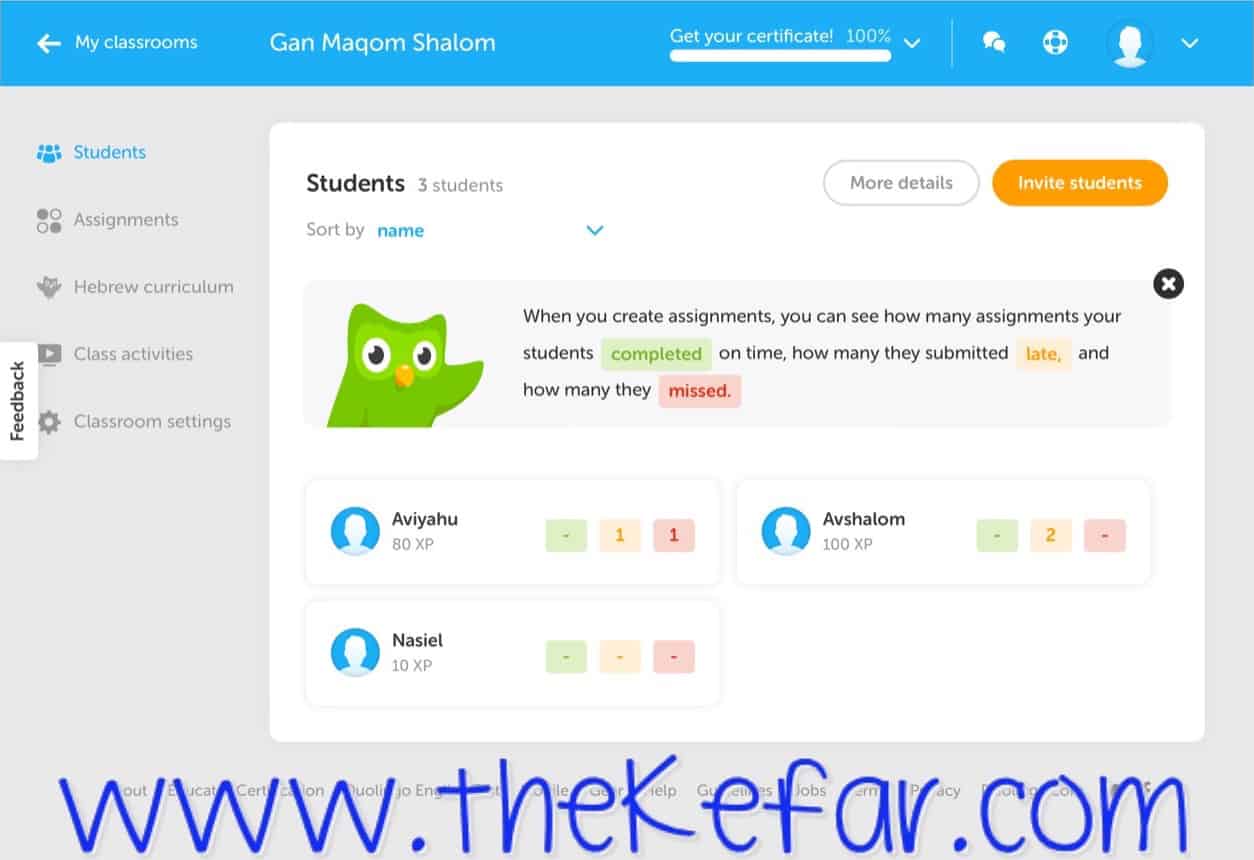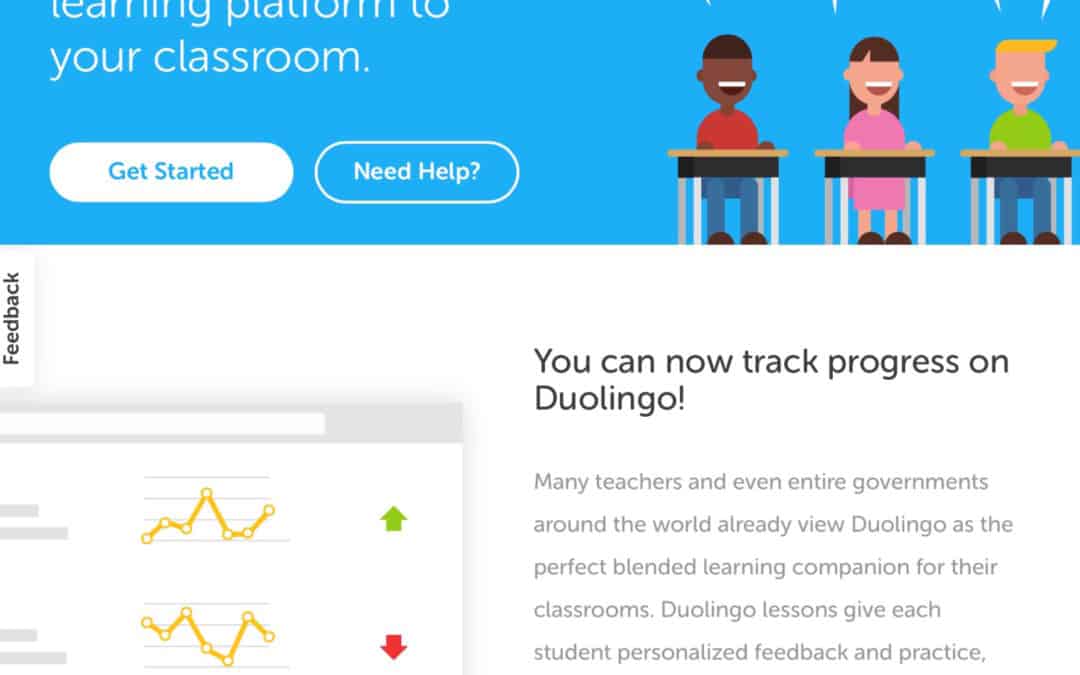(If you’re new – welcome! – every Wed. I post a review of an app, website, or other resource that’s either in Hebrew, or helps with learning Hebrew. You can check out all the previous Revi’i Reviews here.)
This week’s Revi’i Review is of Duolingo, a website we’ve been using in class every day for the last couple of weeks, as part of our daily Hebrew Language Arts (HLA) studies. You should take some time to explore the main website, but this review will focus on the Duolingo Classroom feature.


Duolingo Classroom allows homeschoolers & teachers to set up accounts for their students, who each receive unique logins to complete Hebrew language assignments. As the administrator, you can see what assignments your learners have completed, and you’ll receive an emailed report at the end of every week, letting you know how your learners are progressing. Duolingo Classroom is free, and setting up an account is quick and easy.
This is your dashboard, which you’ll see when you log in. If you have students at varying levels, you have the option of opening up multiple classrooms.


For older students, you can add them to your roster by emailing them a classroom link. If you have younger learners, like I do, then you can input them manually, without email addresses, and the system will generate usernames and passwords and email them to you.
With Duolingo Classroom, you can change your students’ passwords (I did, so they’re all the same and easy to remember); transfer them into a different classroom; or take them off your list, all by clicking the “Manage Student” button. The “View Activity Log” feature allows you to see an up-to-date list of all the assignments they’ve completed (see below).


My boys are young, so I don’t use this assignment feature, but if you have more independent students, you can assign “lessons” ahead of time, with deadlines. Duolingo Classroom will track when the assignments are completed, and highlight whether they’re done on time or not; this information will also be included in your weekly email reports.

Although Duolingo Classroom calls the assignments “lessons,” they are not designed to teach new material. The assignments are really ways to measure what your child knows/is learning. If you’re looking for something to teach your child Hebrew, this is not it. The various assignments measure your child’s knowledge of Hebrew vocabulary, Hebrew listening comprehension skills, and Hebrew and English spelling skills. The “lessons” are grouped together in different ways; Letters 1 (shown below) is the first level, and is made up of 6 assignments that cover the listed vocabulary words.

Again, Duolingo Classroom assignments aren’t for beginner learners, but rather for those who can read Hebrew, and can use and understand simple Hebrew vocabulary. As the educator, you can of course design lessons around the vocabulary lists, and then use these assignments to provide additional practice, or to assess your learners. (Below is the student view, but it looks almost the same on the admin side.)

Below you can see examples of assignment questions. Most of the questions ask learners to translate a word or phrase from Hebrew to English, or from English to Hebrew; some of the Hebrew phrases will include audio, but not all. In some tasks, students must listen to a Hebrew phrase, and type what they hear in Hebrew; read an English sentence, and choose all the correct Hebrew translations; or identify a picture in Hebrew. You will need to have your own external Hebrew keyboard on your device, as there isn’t one built into Duolingo.




My three Hebrew readers independently complete an assignment a day on Duolingo, and it’s definitely one of their favorite tasks of the day…primarily because they get to use my iPad, but also because they get an enormous sense of satisfaction from every answer marked correct, and for finishing the lesson and earning points. I love that they get lots of spelling practice in both Hebrew and English, and can actively translate from one language to the next. I would love to see different types of questions, or perhaps even actual lessons, but perhaps we’ll get more variety as they advance to higher levels. All in all, we love our Duolingo Classroom!
Click HERE to set up a Duolingo Classrooms account for free.
Todah for reading, and don’t forget to check back next Revi’i for another review!



Trackbacks/Pingbacks